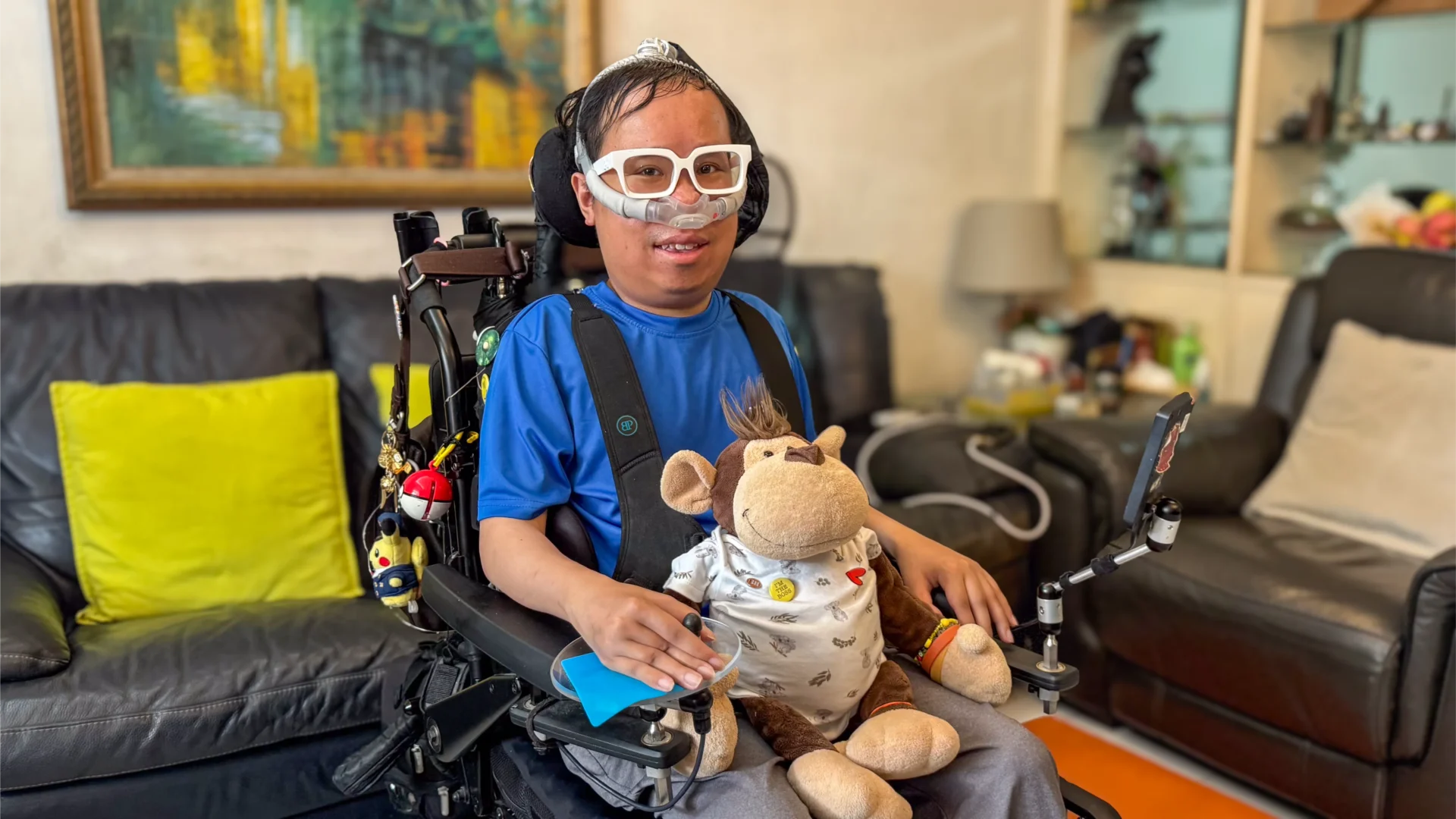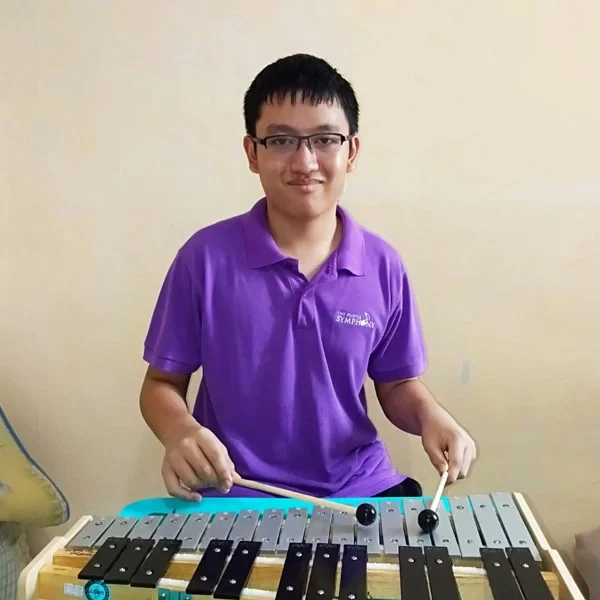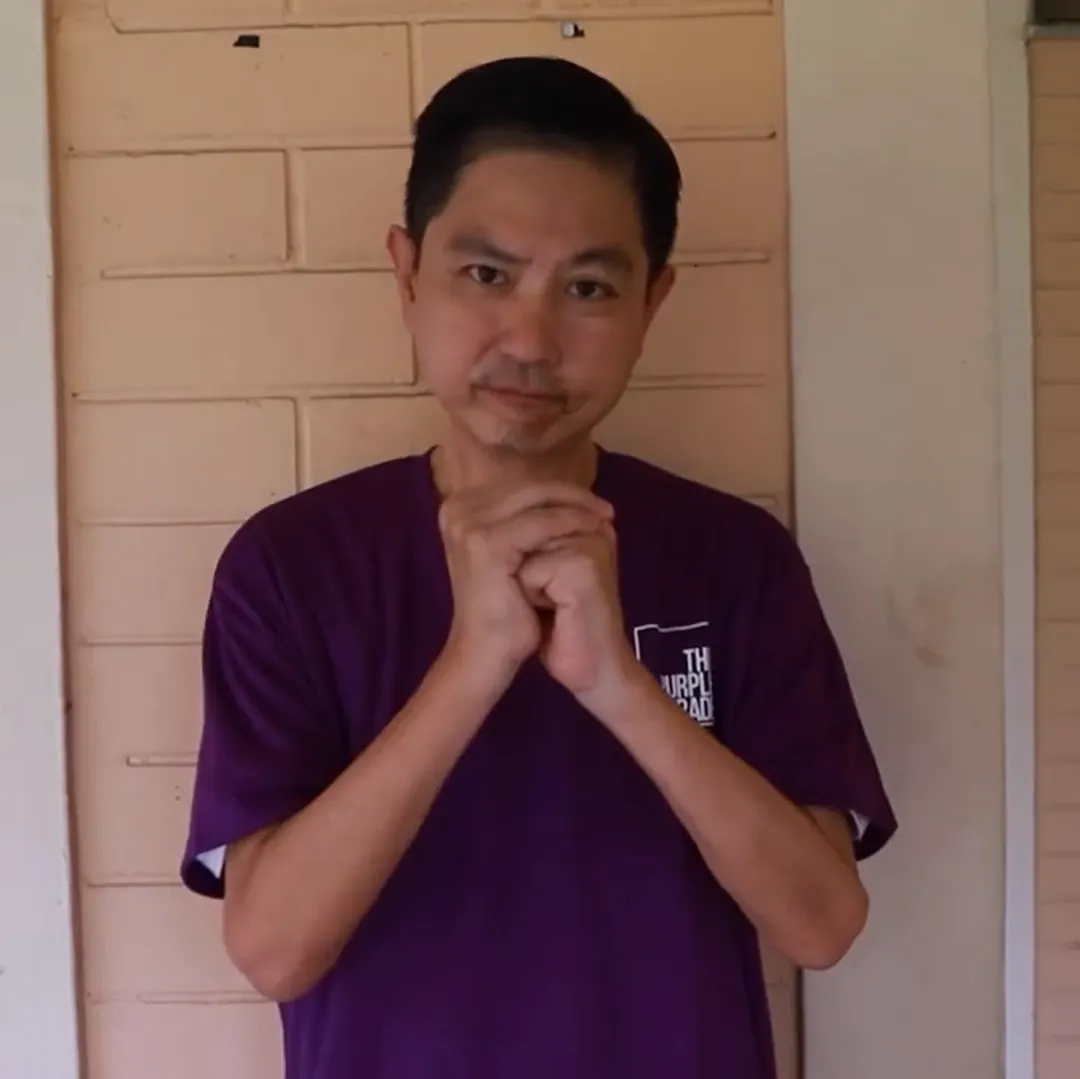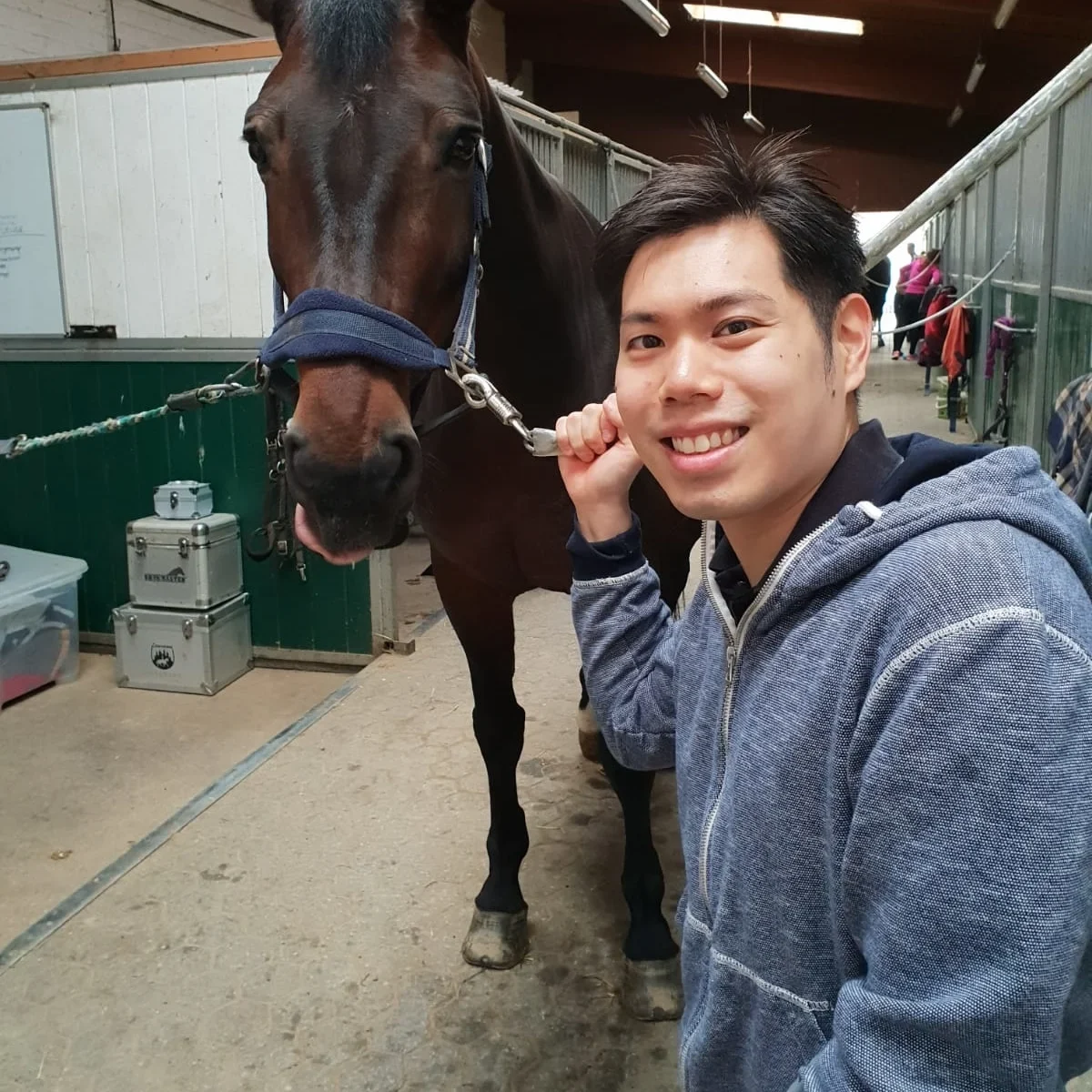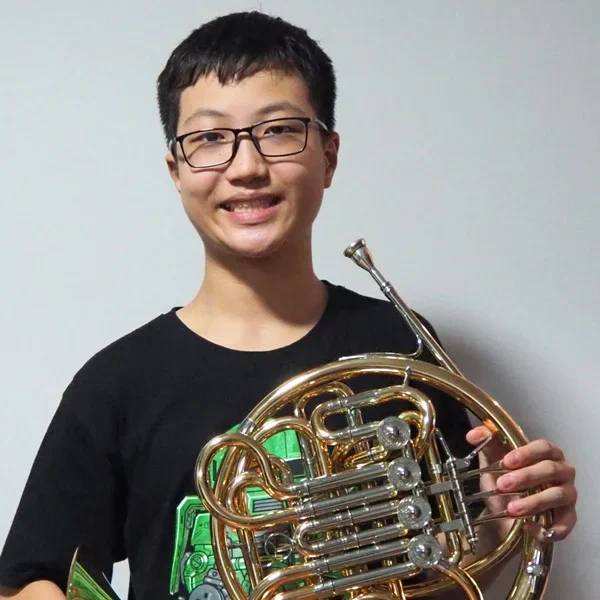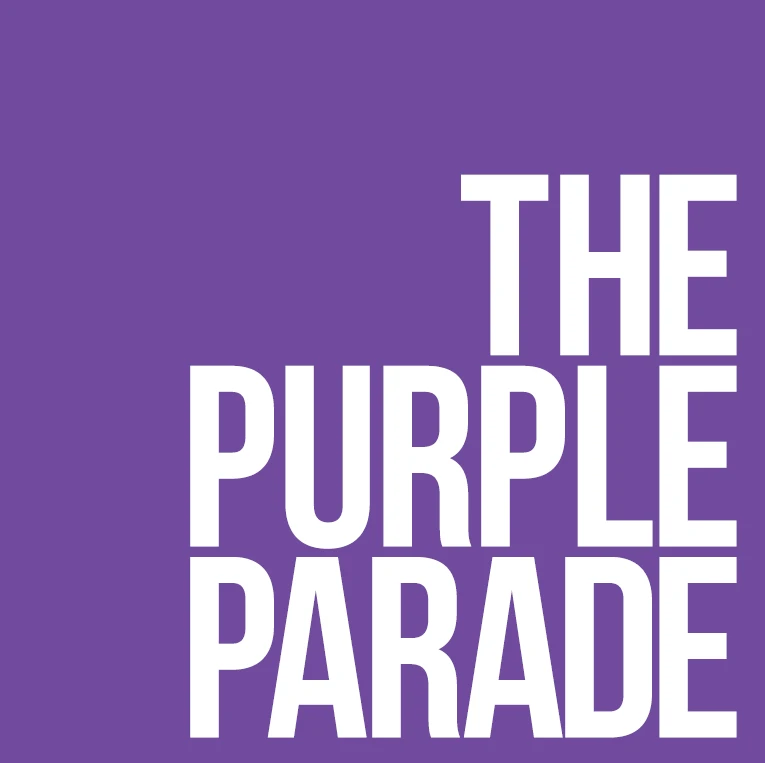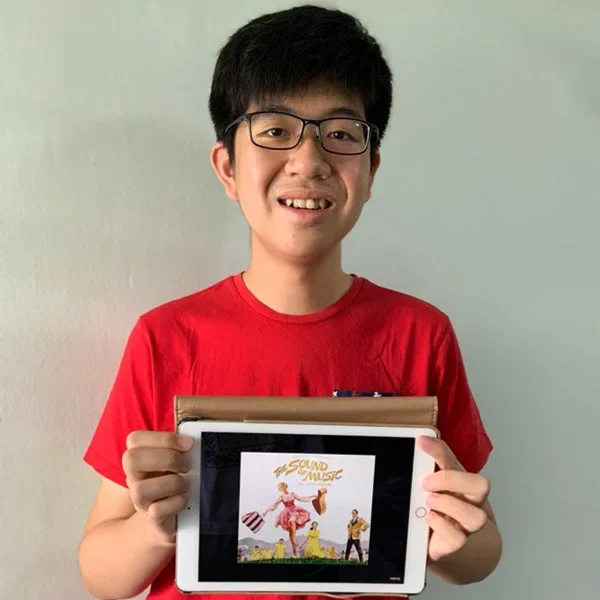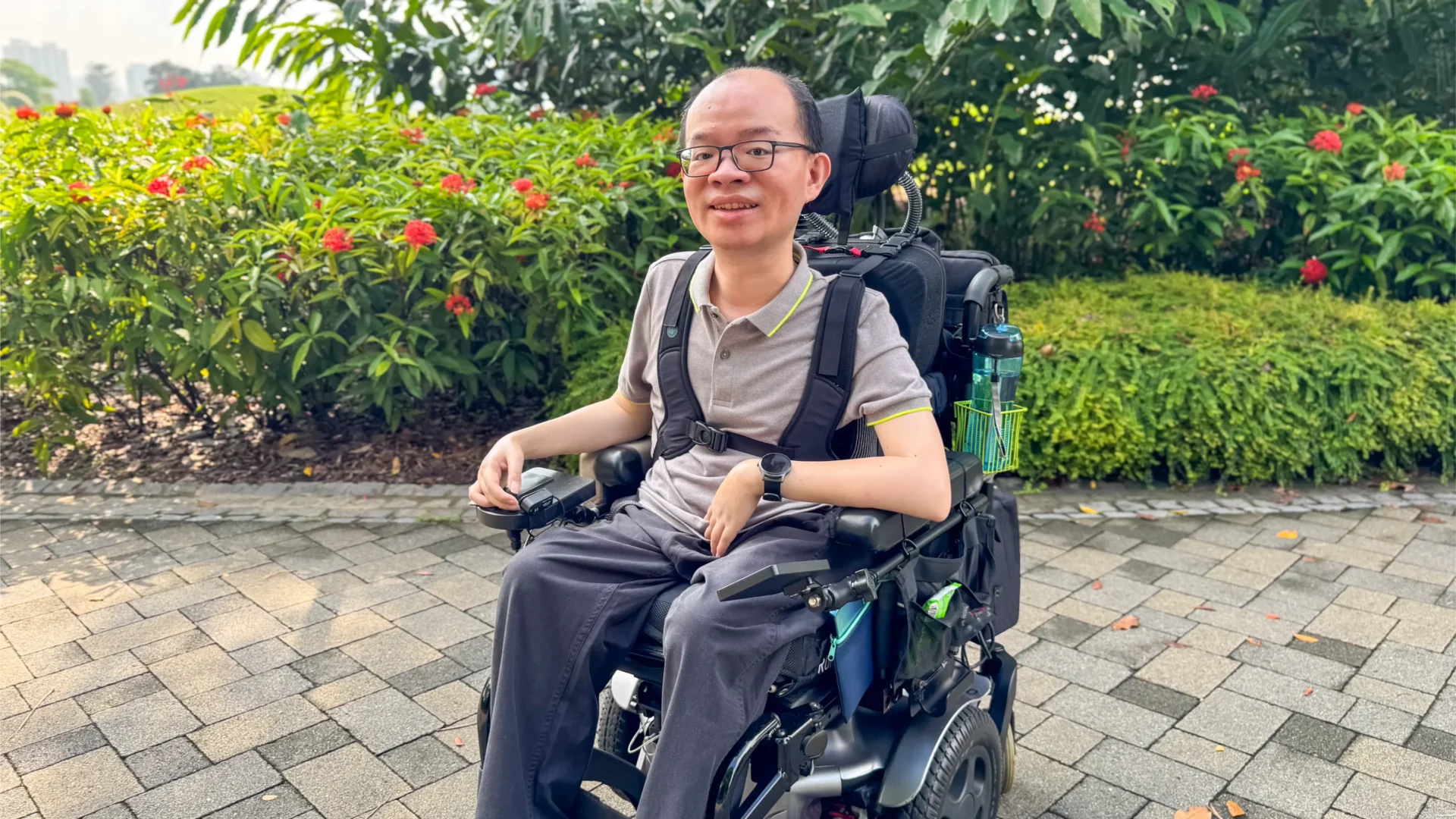Timothy Chan
Can I Win the ‘TROPHY’ in Muscular Dys-TROPHY?
When I was little, my parents suddenly started taking me everywhere. I didn’t understand why.
Only later did I realize—they were racing against time.
At five, I was diagnosed with Duchenne muscular dystrophy. I had been falling a lot, so my parents took me to a doctor. That’s when we were told the news.
Many people with my condition don’t live past 30. More recently, advancements in medicine have extended the life expectancy of people like me, but I still live with the reality that my time may be shorter than most.
This year, I turn 35.
What was your journey with your disability like?
I think it took a long time for me to really understand what my condition really meant for me and how it’d impact the way I live. I guess when you’re 8, you don’t really think about how different your life would be like when you’re 80, or if you’ll even live to such an age.
Even when I was completing my university studies as a young adult, I still was focused on my future in very ‘traditional’ ways: get a job, earn my own money, get married, and retire in my 60’s. I guess I assumed I absolutely had to live a ‘normal’ life just like everyone else.
Eventually, I started doubting that assumption.
Do I really have to live a ‘normal’ life, when I don’t even have a ‘normal’ person’s life expectancy?
I think when it really sunk in that my time on earth was indeed much more limited than everyone else’s, it made me realise just how much more precious every day was.
Some people might say this sounds a little depressing but honestly, it’s been liberating. I don’t have the time to waste doing things that I don’t want to do with my life. It’s made me more grateful for each day that I have, and I now choose to spend my time doing things that I enjoy.
What’s one area where you hope to make a great impact?
I believe a lot of problems in our lives are design-related problems. And so all it takes is a well-designed solution to improve that specific aspect of our lives.
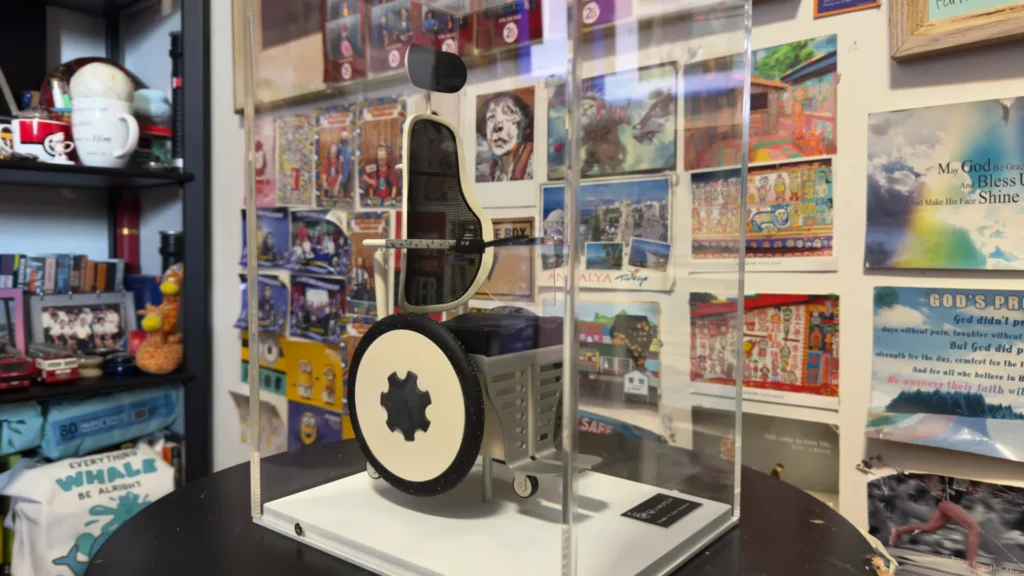
This is my answer to the question: If you could design something to improve your personal life, what would it be?
For me, this is what my dream wheelchair would look like. Sleek and minimalistic.
For a lot of wheelchair users like myself, the wheelchair itself is bulky, distracting, and draws attention away from the person using it. It’s a cold piece of medical equipment, and many wheelchairs look exactly the same–a metal frame with wires and tubes sticking out.
It can honestly feel a little de-personalising and de-humanising.
But what if wheelchairs were more like cars?
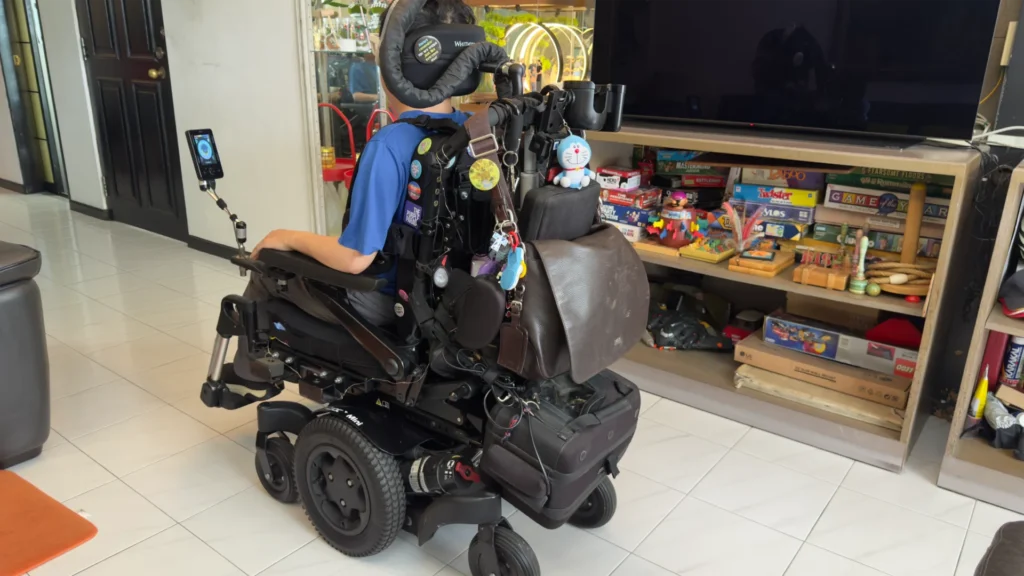
When you look at a car, the mechanical bits are all hidden away. Your eyes are drawn to the contours, the aluminum chassis, the paint job – all the parts of automobiles that the designers want you to focus on to convey the aesthetic qualities of the vehicle.
A car like the Volkswagen Beetle is designed to be approachable and family-friendly. And a sports car like a Porsche 911 is designed to convey power and aspiration. But with wheelchairs, these concepts don’t really exist.
So when I was designing my dream wheelchair, I wanted something that looked sleek, stylish, and minimalistic.
To put it simply, I wanted to design a wheelchair that looked more like a car, a ‘hyper-personal’ automobile that I could feel proud to own. Instead of a medical device that reduces my humanity, I wanted a vehicle that emphasises the user’s personality.
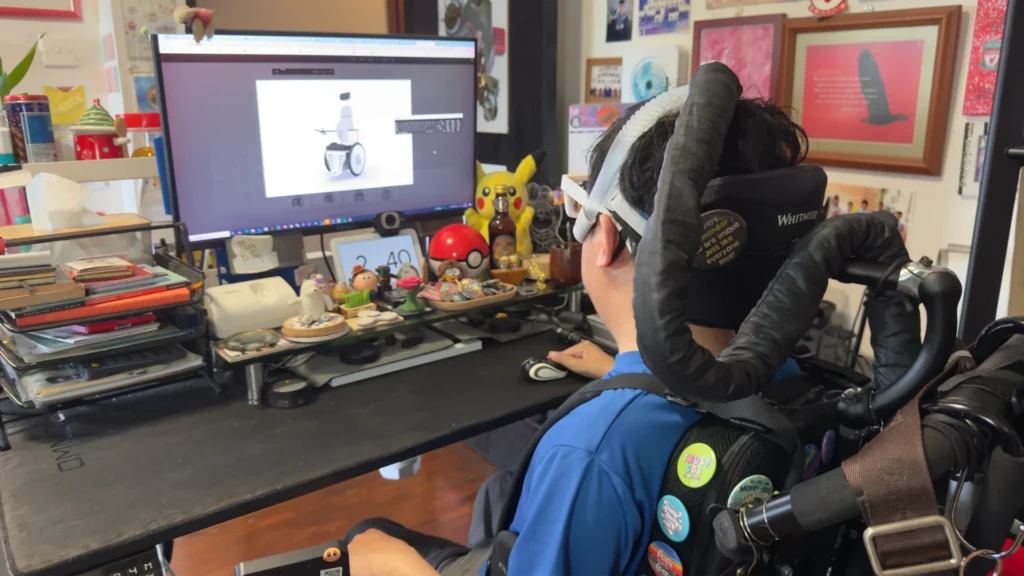
I’m very proud of the fact that I got to create this design as part of my industrial design project at school. I also had some features that I wish could be part of the wheelchair, such as the ability to overcome curbs and stairs, and being able to adjust the height. Sometimes, it’s difficult to use a desk while I’m in my wheelchair because the chair is either too low or too high.
I did try to turn this prototype design into reality but we eventually realized the cost to produce just one unit would be way too high. There are also newer wheelchair models that have innovated and come up with new features that I’ve been wishing for, such as the ability to climb stairs (yes, this really exists!)
But still, if I have the chance some day, I really would like the opportunity to build an actual working version of my dream wheelchair. For now, this scale model of the prototype design will do, and I’m very proud of this project that I completed as part of my university programme on industrial design.
When we encounter problems in our lives and think of solutions to these problems, I think that’s one of the greatest kinds of impact we can create as people.

Did you know?
When interacting with a person using a wheelchair (or any form of mobility aid), you should consider the device as an extension of their body. Just like how you wouldn’t appreciate it if someone touched you or your possessions without asking, please don’t touch someone’s wheelchair without their permission. Thank you for reading this public service announcement on disability etiquette!
As a designer, who’s inspired you the most?
One of my biggest sources of inspiration was my university lecturer. I don’t even think she intended to be inspirational, but her encouragement probably changed my perspective more than she might have expected.
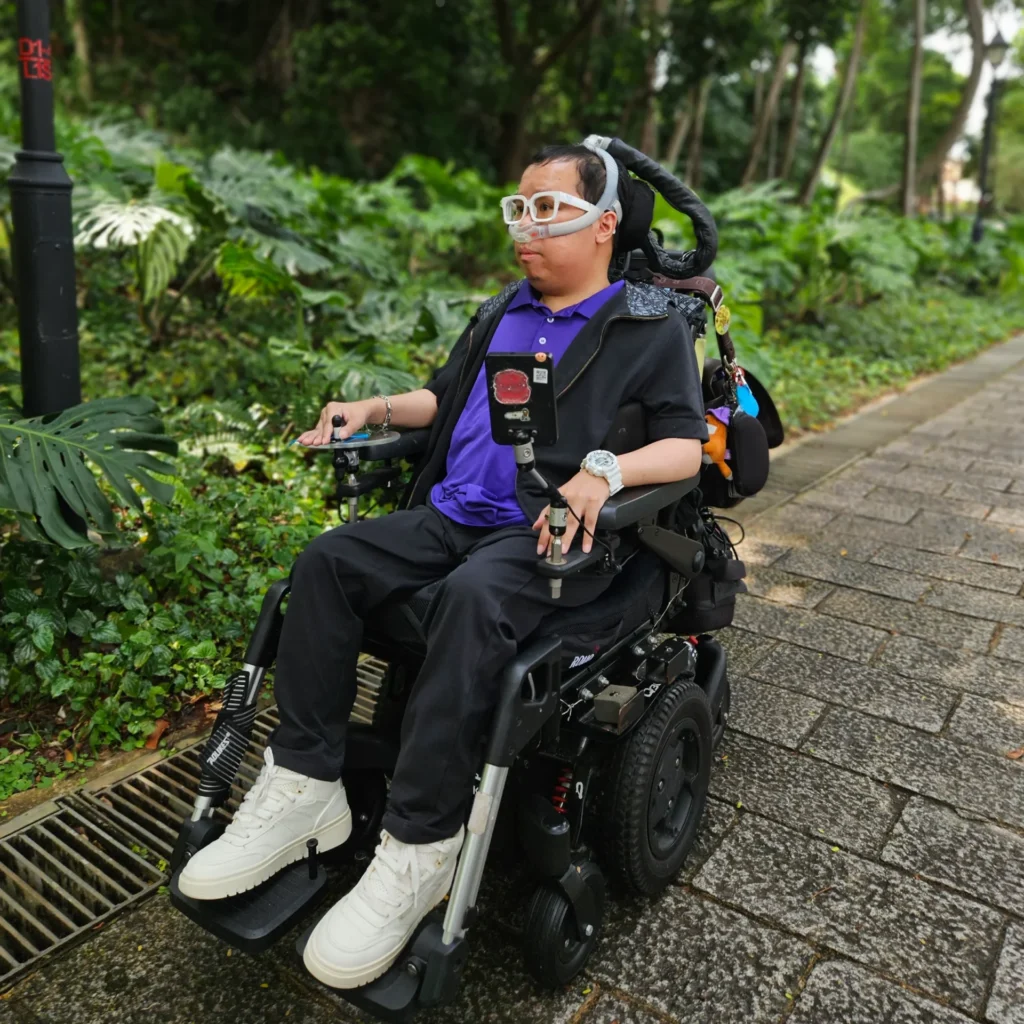
One semester, we were doing a module on user experience design, and we were told to evaluate the user-friendliness of our public transport system. At that time, I think I was still very much focused on all the limitations my disability came with, so I told my lecturer, “Our buses and trains are not very wheelchair-accessible, so it’ll make it very difficult for me to evaluate. I don’t think I should do this project.”
Her response was very short, “Doesn’t that mean it’s even more important that you do this project?”
I think what made that moment so profound was the realisation that my experiences as a person with a disability could have some value to others. By evaluating our public transport system with my perspective as a wheelchair user, I could provide feedback that would make life better for others like me.
My disability was no longer a limitation. It was a strength.
Do you have advice for others going through difficult times?
Things will always change. So learn to embrace it.
With my condition, things are always changing. I had to adjust from walking to using a wheelchair. Then from breathing unassisted to using a ventilation machine. I’ve had numerous surgeries, and I even broke my leg at one point.
Along the way, I’ve learned to cherish the moments I have. What I have today, I may not have tomorrow. So I’ll never take things for granted.
I think it’s really about making the most out of every situation.
In 2015, while I was still studying at university, I was randomly approached by a stranger I had never met.
He asked me if I knew how to do design work. I had no portfolio at the time and was only just exploring graphic design, but I just said yes to see where the conversation went.
He then asked me, “Can you help me do some artwork for this year’s ASEAN Para Games?” I was absolutely floored. All this time, I was talking to the Creative Director of one of ASEAN’s biggest sporting events.
I accepted the opportunity and quickly scrambled to put together a basic portfolio to submit to their creative team. And that’s how I got the opportunity to contribute artwork to the 2015 ASEAN Para Games! Till this day, it’s one of my proudest life accomplishments.
Sometimes, you just have to go with the flow, and see where life takes you!
What else is on your bucket list?
I want to do something that can showcase how I live my life beyond my condition.
My friend Boon Keng, who has the same condition that I do, wrote his book “Can I Love?” And I think there’s something very powerful about being able to pen down your thoughts and feelings for the world to see.
Long after I’m gone, someone can pick up your book and go, “Wow, this was what they were feeling.”
I’m still not sure what the title should be, or what the book will even be about. But I’d like it if the title could be a play on words about muscular dystrophy.
There’s a poem written by a person with muscular dystrophy that has the lines:
So where’s the trophy?
Where’s the part of this muscle disease that tells him
he’s a winner?
I really liked that play on words, with the ‘trophy’ in ‘muscular dystrophy’. Maybe my book can be titled something like “There’s No Shame in Duchenne” (pronounced ‘doo-shen’).
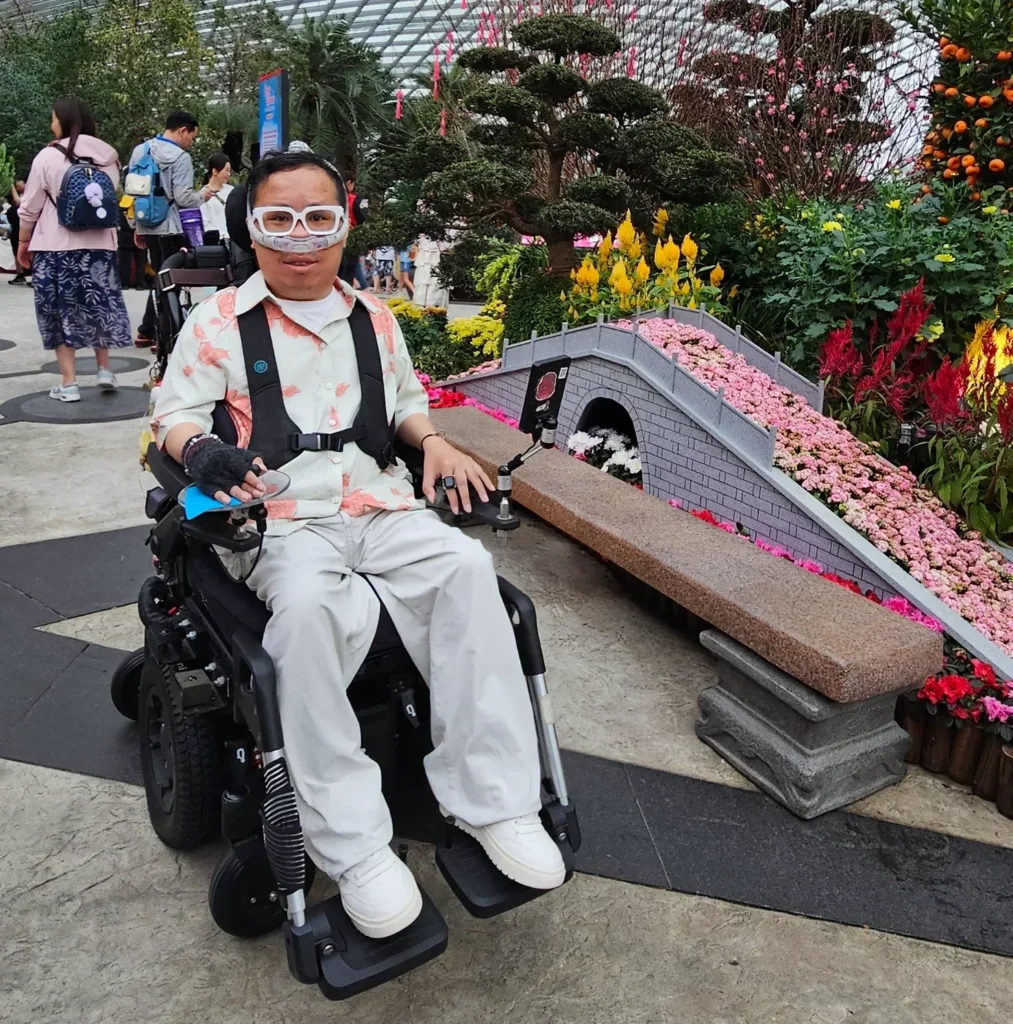
These days, even though I’m definitely getting physically weaker and maybe should be resting more, I always want to push myself to see where else I can go, and what else I can do.
I love going out to see the outside . And even to test how wheelchair-accessible places can be. Maybe it’s the wanderlust that my parents instilled in me when they took me travelling all over the world shortly after my diagnosis.
One of my favourite places in Singapore is Gardens by the Bay. It’s very calming. And it doesn’t hurt that it’s wheelchair-friendly.
I’ve also been playing boccia as a sport for the past 2 years. As a disability-friendly sport, it has the right level of physical activity for me, plus there’s a great element of strategy involved.
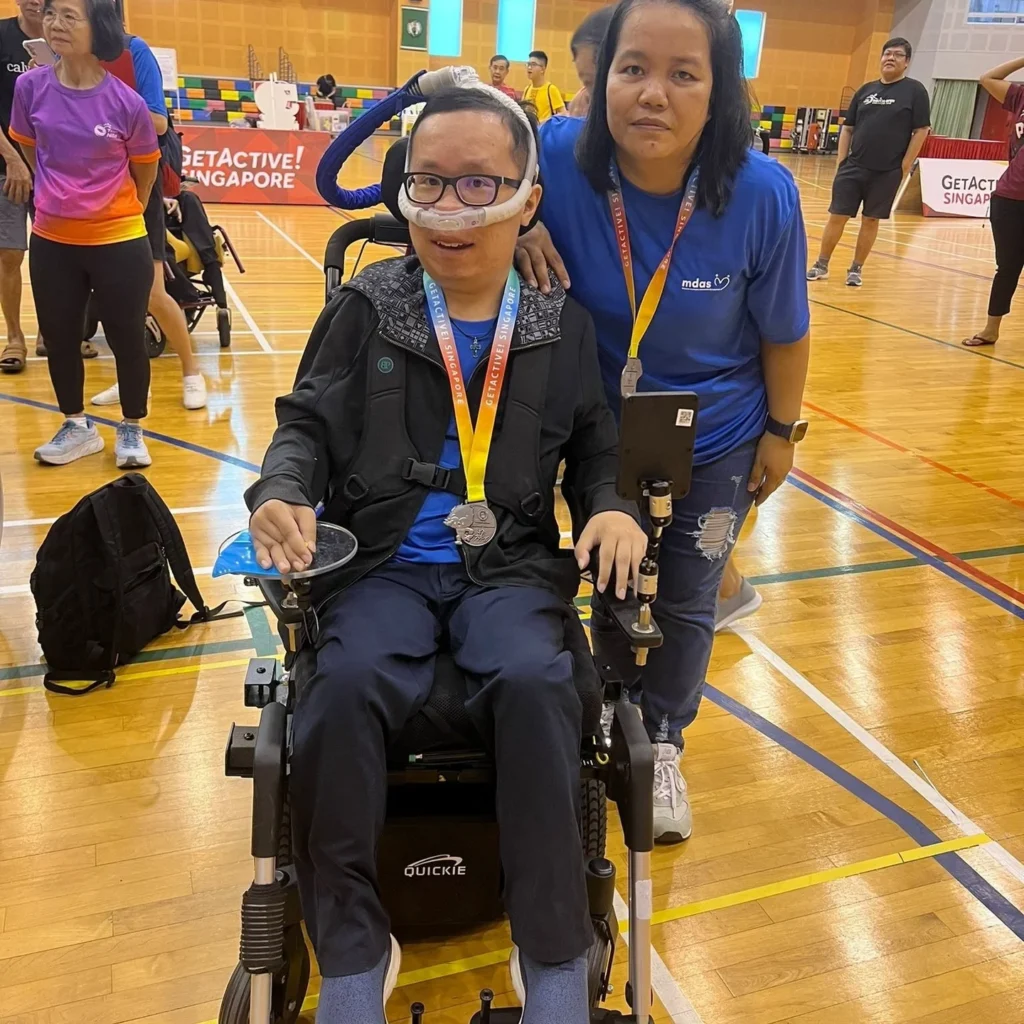
I probably won’t end up playing boccia at the big games like the Paralympics. But in my own way, I think I’ve done well in my own game of life.
Despite everything, I feel very blessed. Maybe I’ve found the trophy in my muscular dystrophy.

